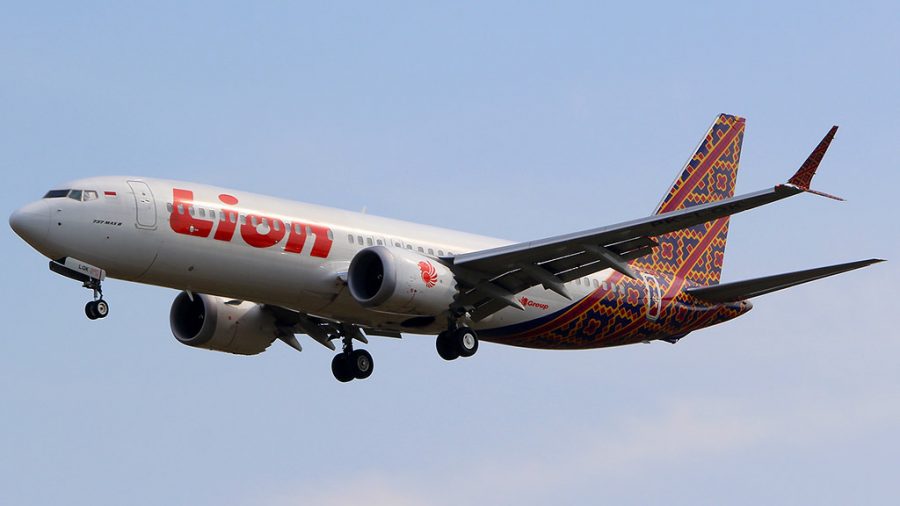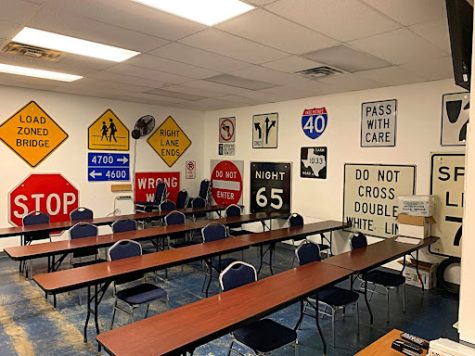Rough Ride
Breakdown of the Boeing 737 MAX crashes, the failed MCAS, and what this means for travelers
Pilots, like those on the fated Lion Air flight, did not know how to shut the MCAS off
Boeing is hitting some turbulence again, not even a month after the second fatal Boeing 737 MAX crash of an Ethiopian Airlines plane claimed 157 lives and just five months after the first crash of a Lion plane.
A lawsuit, Seeks vs Boeing Co. et. al, filed on April 9th, has brought more trouble for Boeing following problems with the Maneuvering Characteristics Augmentation System (MCAS), as shareholders claim that Boeing did not disclose the potential risks of the MCAS on the 737 MAX model due to Boeing’s rush to compete with AirBus. The lawsuit also claims that Boeing made certain features of the system “optional,” such features which could have prevented both 737 MAX crashes.
The problems began to become apparent after Lion Air Flight 610, en route to Bali, crashed into the Java Sea on October 29, 2018, 13 minutes after taking off from Jakarta, Indonesia.
Information provided about the plane’s final minutes from the recovered Black Box showed that the pilots were constantly struggling with the control gear during the flight. The MCAS, in a faulty attempt to correct the ascension of the plane, closed wing flaps that allow the plane to climb higher. The pilots attempted to fight against the control system over 24 times before the plane’s eventual crash.
The article “Black box reveals the futile struggle between pilots and computer inside the cockpit of doomed Lion Air Flight 610,” by Christian Edwards from Business Insider, stated that “Once Flight 610 was airborne, the pilots’ control column began to shake, a precursor to a stall.”
After the crash, the MCAS immediately became the focus of the investigation. The Black Box also revealed that the pilots who flew the fated Lion plane on its second-to-last flight experienced similar issues which were safely resolved after disengaging the MCAS.
A similar situation occurred during the fated Ethiopian Airlines Flight 302 that crashed in March, a mere six minutes after take-off. The MCAS was already under heavy suspicion, which only increased when it was reported that the Ethiopian flight, like Lion Air, immediately began flying irregularly. Such flight patterns led investigators to believe that the pilots were struggling against the plane’s systems for the duration of the flight.
MCAS and its failures
“It’s like a check system – like a security system for malfunctions” said Scott Dube, technology and engineering teacher at Triton who also has a pilot’s license.
The MCAS on the Boeing 737 MAX 8 and MAX 9 is designed to prevent an aircraft from stalling during ascent, correcting for a position change to the engines that may cause the plane to stall while ascending.
“They shifted where the engines are, and as a result the planes have a tendency to push or tilt up,” said Ian McBee, a chemistry teacher at Triton.
Russell Cooke, a small plane pilot who holds a Single Engine Land license and has worked as a mechanical engineer at the Portsmouth Naval Shipyard, explained how an airplane can stall during take-off.
“When an airplane takes off, its speed is relatively low,” Cooke explained. “In order for the wings to support the weight of the plane, it must pitch up to a high wing Angle of Attack (AoA). If AoA exceeds a certain value (which depends on the wing shape), it will aerodynamically ‘stall’ and produce dramatically less lift, which could cause the wing to be unable to support the plane and it would fall.”
One sensor connected to the system, the horizontal stabilizer, was designed to send a message to the MCAS if it sensed that the AoA was abnormally high. The MCAS was then meant to automatically push down, or trim, the nose of the plane to prevent a stall.
On the two Boeing crashes, it appears that the sensory system was faulty, telling the MCAS to trim the take-off when really the AoA was normal. Trimming a normally ascending plane too much, as the MCAS system did, causes the plane to crash.
“The underlying problem is termed as ‘runaway trim,’ and it is solved by ‘cutting out’ the electrical trim system and trimming by hand,” explained Cooke. “‘Cutting out’ the electrical system is performed by shutting off switches that provide power to that system.”
The Seattle Times reported that the MCAS first came under scrutiny in 2015 when Boeing sent a safety analysis for the new 737 MAX to the FAA, a requirement for airline companies to certify their airplanes. The Times claims that the safety analysis found “several crucial flaws,” including that the system was stronger than originally reported in the analysis and that the analysis never mentioned that the system could reset, hence why the planes continually trimmed even when the pilot fought the system.
One of the issues with the sensory system is that the MCAS only takes data from one sensor, increasing the risk of a “single-point failure.” Because the MCAS was only getting information from one sensor, if that sensor was faulty, the entire system was faulty.
“It’s sort-of like if your car was self driving up until you were going around a corner on ice at high speed, and now you have to make a decision,” described McBee.
Current Safety of Travel
Many countries, including the United States, have grounded the 737 MAX due to the rising safety concerns regarding the recent crashes. But, does this mean that travelers should second-guess their upcoming vacations?
In short, travelers should not be overly concerned. The 737 MAX 8 and MAX 9 are currently the only planes that require the MCAS, due to the position of their engines which cause the plane to be more likely to stall during take-off. Moreso, the MCAS can be turned off by pilots who are trained to do so.
“Now that pilots are hyper-aware of the problem, they can shut off the automatic pilot system and get control of the plane,” explained Dube. “But, you have a small window of time to do it.”
The FAA also monitors and certifies planes as safe enough to fly. It was the FAA that grounded the 737 MAX and they will re-evaluate the 737 MAX once changes are made to the MCAS system.
“The public pays for the FAA and NTSB to monitor this equipement to ensure its performance is satisfactory,” said Cooke. “When an acceptable fix developed and implemented, the FAA will again certify the airplane and the 737 will again be a very safe airplane.”
Works Cited
Doherty, Tucker and Lindeman, Todd. “The problems that led to the Boeing 737 MAX grounding,” Politico, Politico LLC, 15 March 2019,
https://www.politico.com/story/2019/03/15/boeing-737-max-grounding-1223072
Rapier, Graham. “Everything we know about Ethiopian Airlines’ deadly crash of a Boeing 737 MAX 8, the second disaster involving the plane in 5 months, and what Boeing is doing to ensure it never happens again,” Business Insider, Insider Inc, 19 March 2019,
https://www.businessinsider.com/ethiopian-airlines-boeing-737-max-crash-timeline-impact-2019-3
Fritze, John, et. al. “President Donald Trump issues order to ground Boeing 737 MAX 8 after crashes,” USA Today, USA Today, 13 March 2019,
https://www.usatoday.com/story/news/politics/2019/03/13/donald-trump-says-he-signed-order-ground-boeing-737-max-8/3152157002/
Ostrower, Jon. “What is the Boeing 737 Max Maneuvering Characteristics Augmentation System?” The Air Current, JAO Aero Media LLC, 13 November 2018,
https://theaircurrent.com/aviation-safety/what-is-the-boeing-737-max-maneuvering-characteristics-augmentation-system-mcas-jt610/
Reuters. “Boeing shareholders file class-action lawsuit over 737 Max plane crashes,” NBC News, NBC Universal, 9 April 2019,
https://www.nbcnews.com/business/business-news/boeing-shareholders-file-class-action-lawsuit-over-737-max-plane-n992796
Isidore, Chris. “Airlines have completely stopped ordering the 737 Max,” CNN Business, Cable News Network, 9 April 2019
https://www.cnn.com/2019/04/09/business/boeing-737-max-deliveries/index.html
Garcia-Roberts, Gus, et. al. “From the flight manual to automation, why pilots have complained about Boeing’s 737 MAX 8,” USA Today, USA Today, 13 March 2019,
https://www.usatoday.com/story/news/nation/2019/03/13/boeing-737-max-8-pilots-voiced-safety-concerns-before-ethiopia-crash/3145393002/
Gates, Dominic. “Flawed analysis, failed oversight: How Boeing, FAA certified the suspect 737 MAX flight control system,” Seattle Times, The Seattle Times, 21 March 2019,
https://www.seattletimes.com/business/boeing-aerospace/failed-certification-faa-missed-safety-issues-in-the-737-max-system-implicated-in-the-lion-air-crash/
Paris, Francesca. “‘Clear’ Similarities Between Ethiopian And Indonesian Plane Crashes, Official Says,” NPR, NPR, 17 March 2019,
https://www.npr.org/2019/03/17/704223209/mass-funeral-held-for-ethiopian-airlines-crash-victims-as-investigation-continue
Edwards, Christian. “Black box reveals the futile struggle between pilots and computer inside the cockpit of doomed Lion Air Flight 610,” Business Insider, Insider INC, 27 November 2018,
https://www.businessinsider.com/black-box-shows-pilots-fought-to-keep-lion-air-flight-jt610-in-the-air-2018-11
Baker, Sinéad. “An Ethiopian Airlines passenger said he missed the crash by 2 minutes: ‘I’m grateful to be alive,’” Business Insider, Insider INC, 11 March 2019,
https://www.businessinsider.com/ethiopian-airlines-passenger-late-to-fatal-flight-2019-3

Hi, my name is Jacqueline Downs, 18, and I am a senior at Triton. While this is my first year in Journalism, so far I have really enjoyed reporting on...













